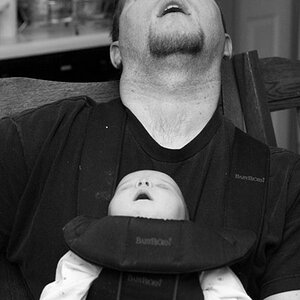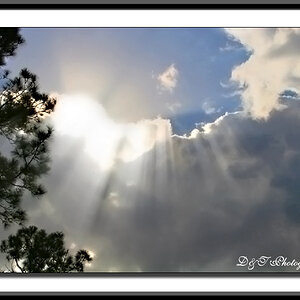panocho
TPF Noob!
- Joined
- Feb 7, 2005
- Messages
- 425
- Reaction score
- 2
- Location
- Compostela, GZ
- Can others edit my Photos
- Photos NOT OK to edit
moved by the thoughts around another thread here, I would like to suggest a little thinking/comment on the following:
a picture is basically an enormous collection of little dots of different colors/grey scale that put together and viewed from a proper distance create an image. This we all know.
so, in digital those little dots are the pixels, whereas in film they basically are the result of the silver halide crystals reacting to light.
now there is a difference, an important difference, in my opinion, between the two kinds of dots created by digital or film. It may sound stupid to some of you, but I really think there is a significant difference. And this is that pixels are perfectly arranged in vertical and horizontal straight lines, whereas the crystals are chaotically dispersed.
In my opinion, this affects the image created. There is somehow a different "feeling" on a digital vs a film picture, one that probably most of the times no one could notice, but sometimes one could, and, anyway, somehow it is there. Honestly speaking, I've had noticed it sometimes.
I started to think about this after reading an article of the never-ending comparison digital/film by a Spanish photographer. I recommend it to those of you interested in such topic (is there anyone still?). Why? well, he does it beacuse he was tired of such articles, most of them biased by one or the other formats. So he did it with a radical rigorousness, that may result interesting, as I say
You can take a look at it here:
http://www.hugorodriguez.com/ (then you have to go "artículos" and next, "digital vs película") it is in spanish, but you can at least analyse the visual results of the comparison
well, back to the question. My point is that the difference between the two kinds of dots (the way the arrange to create the image) is significant. In which way? Well, I would say that the image created by film feels more natural, because of the more natural way to arrange the dots (chaotically). OF COURSE, most of the times no one would notice any difference at all, but it doesn't mean it isn't there, at the bottom, so to say, and that sometimes it can arise and be somehow noticeable.
Well, this is basically it. What do you say? Would you agree? would any of you also say that sometimes has noticed some difference in a digital picture, some that you couldn't explain, but somehow you noticed?
a picture is basically an enormous collection of little dots of different colors/grey scale that put together and viewed from a proper distance create an image. This we all know.
so, in digital those little dots are the pixels, whereas in film they basically are the result of the silver halide crystals reacting to light.
now there is a difference, an important difference, in my opinion, between the two kinds of dots created by digital or film. It may sound stupid to some of you, but I really think there is a significant difference. And this is that pixels are perfectly arranged in vertical and horizontal straight lines, whereas the crystals are chaotically dispersed.
In my opinion, this affects the image created. There is somehow a different "feeling" on a digital vs a film picture, one that probably most of the times no one could notice, but sometimes one could, and, anyway, somehow it is there. Honestly speaking, I've had noticed it sometimes.
I started to think about this after reading an article of the never-ending comparison digital/film by a Spanish photographer. I recommend it to those of you interested in such topic (is there anyone still?). Why? well, he does it beacuse he was tired of such articles, most of them biased by one or the other formats. So he did it with a radical rigorousness, that may result interesting, as I say
You can take a look at it here:
http://www.hugorodriguez.com/ (then you have to go "artículos" and next, "digital vs película") it is in spanish, but you can at least analyse the visual results of the comparison
well, back to the question. My point is that the difference between the two kinds of dots (the way the arrange to create the image) is significant. In which way? Well, I would say that the image created by film feels more natural, because of the more natural way to arrange the dots (chaotically). OF COURSE, most of the times no one would notice any difference at all, but it doesn't mean it isn't there, at the bottom, so to say, and that sometimes it can arise and be somehow noticeable.
Well, this is basically it. What do you say? Would you agree? would any of you also say that sometimes has noticed some difference in a digital picture, some that you couldn't explain, but somehow you noticed?



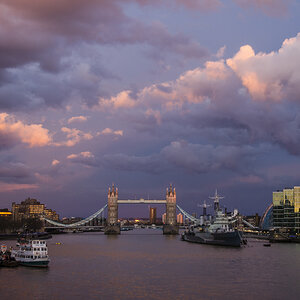
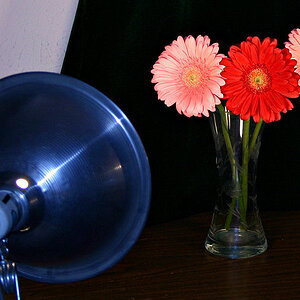
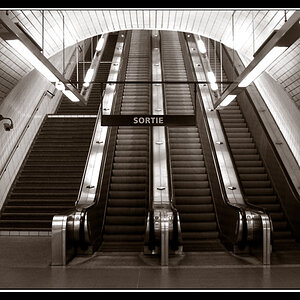



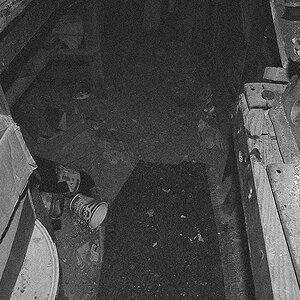
![[No title]](/data/xfmg/thumbnail/37/37113-886cb28b1e3fb197bdd00a9148269407.jpg?1619737882)
![[No title]](/data/xfmg/thumbnail/42/42277-63576745f84be96df79b94ca0f49e00b.jpg?1619740085)
